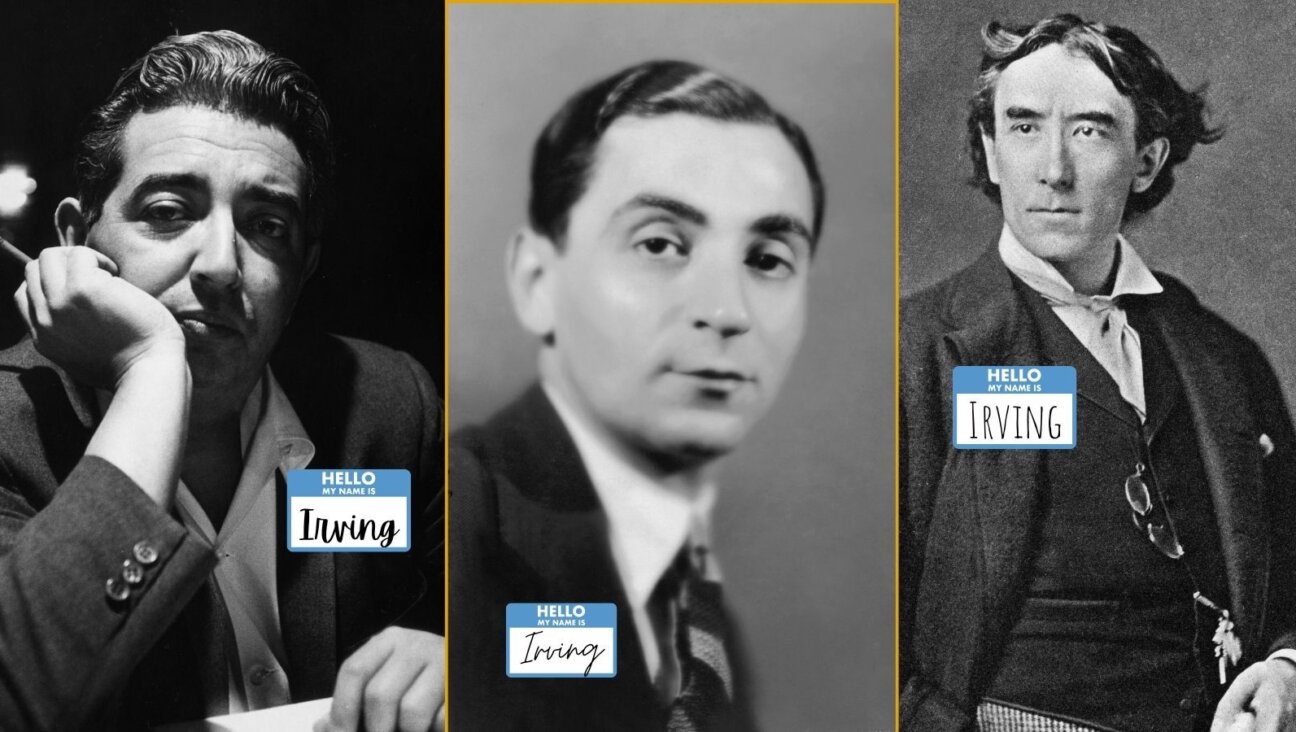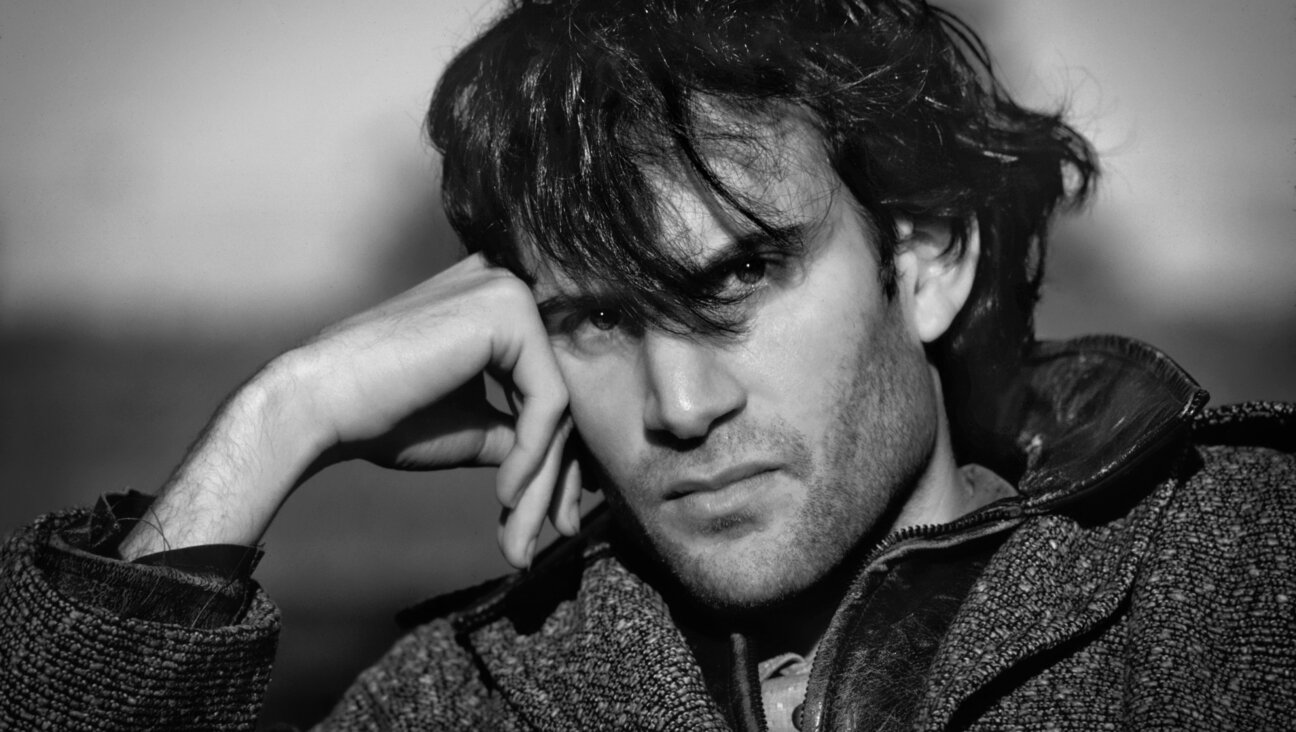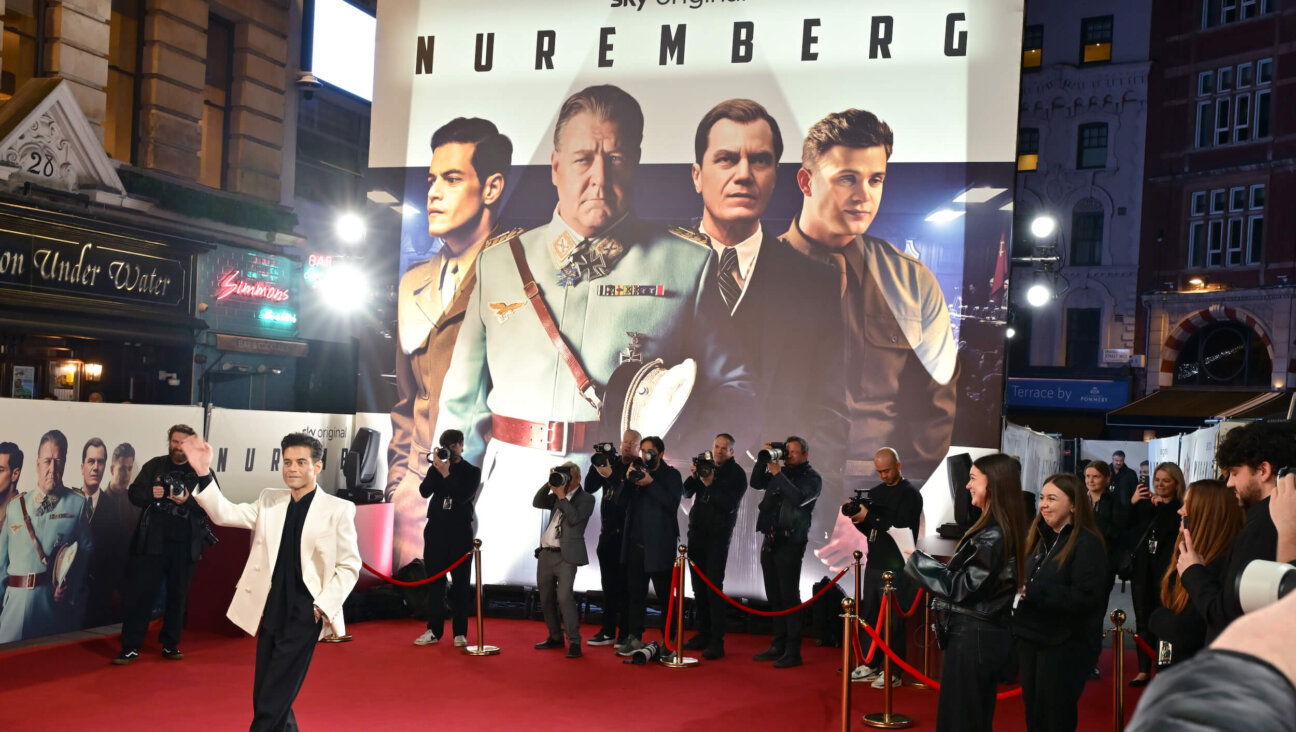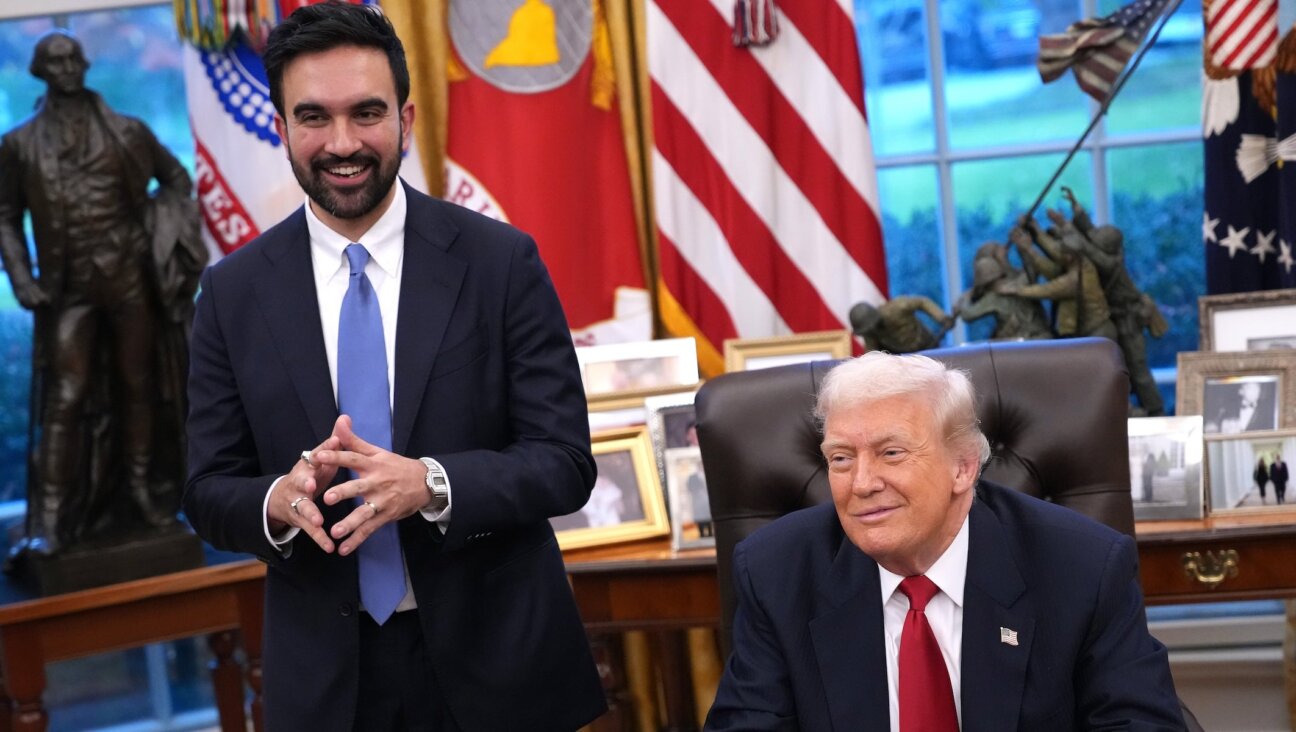Whew! The Unsung Art of Whistling Returns
In the fictional shtetl of Frampol, the home of Isaac Bashevis Singer’s Gimpel the Fool, whistling on the Sabbath would have been strictly forbidden, and whistling a tune at night was known to bring out the demons. During the Holocaust, the simple act of whistling a familiar melody became a mode of communication in the Nazi camps. After the war, it helped lead husbands and wives back into each other’s arms. But in America, where Jewish performers like Al Jolson, Pesakh’ke Burstein and Sophie Tucker built whistling into their vaudeville acts, a melodic warble could bring down the house and, as Broadway composer Oscar Hammerstein knew, turn signature songs into popular hits.
As Lauren Bacall — née Betty Joan Perske from Brooklyn — told Humphrey Bogart in “To Have and Have Not,” all you have to do is “just put your lips together and blow.”
Often described as humankind’s original musical instrument, whistling has a history that spans ancient Native American rituals, early mythology and the obscure “whistled language” of the Canary Islands. In early blues, jazz and vaudeville music, whistlers added bird trills and calls to songs for variety and novelty, and small-town concerts often featured whistling prodigies filling in for flutes or clarinets on favorite songs.
“It would be easier to try and find the one culture that doesn’t have whistling than to list all the ones that do,” said Jim Voltz, an amateur historian of whistling.
Whistling has likely always been a feature of the Jewish musical repertoire, but like tummling and tap dancing, it has been superseded by other musical styles and entertainments. Nonetheless, 50 years after the last big heyday of performance whistling, tooters like Steve Herbst — a champion whistler who, like Jolson before him, comes from a family of cantors — and Jack Cohen, a concert whistler from Montreal, are trying to restore its place in the world of popular music.
“You can see whistling as an oddity, but I see it as a lost art form,” said Herbst, 58, a New York-based classical and pop whistler with a three-octave range and a license plate that reads WHISTLR. He has performed in venues ranging from the Kennedy Center to the “Today” show, trying to prove his point. “Whistlers used to travel with the big bands, but today it’s a struggle.”
Long before the arrival of the iPod, people whistled their favorite tunes to entertain themselves on the way to work, and by the early 1900s, with the introduction of cylinder recordings — which captured simple whistled songs more clearly than complex orchestral arrangements — they could accompany their favorite whistlers.
On the street corners of New York’s Lower East Side, little boys like Al Jolson whistled for change; Jolson was rumored to have been “discovered” whistling to himself as he cleaned the theater at which he worked as an usher, and his character in “The Jazz Singer,” Jack Robin (formerly Jakie Rabinowitz), charmed a cabaret crowd by peppering his breakthrough performance with birdcalls: “Wait a minute, I tell ya, you ain’t heard nothin’! Do you wanna hear ‘Toot, Toot, Tootsie’? All right, hold on, hold on… Lou, Listen. Play ‘Toot, Toot, Tootsie!’ Three choruses, you understand. In the third chorus I whistle. Now give it to ’em hard and heavy. Go right ahead!”
During the golden age of Jewish vaudeville, in the 1920s, the Yiddish vaudeville stages on Manhattan’s Second Avenue echoed with trills from the likes of Sophie Tucker, who whistled the breaks along with her orchestra, and Pesakh’ke Burstein, a Polish performer nicknamed der Pfeifer — or the Whistler, in Yiddish — who delighted audiences with his rakish
Jack Nicholson grin and jaunty whistling choruses.
“He stepped to the middle of the stage, and suddenly there was this sound coming out of him, like a bird! People went nuts.” Nahma Sandrow told the filmmakers behind “The Komediant,” a recent documentary about Burstein’s life. Sandrow, a Bronx Community College professor, has written on Yiddish theater.
“There was a golden age of whistling in this country around the turn of the century through the 1930s,” Voltz said. “And the decline in its popularity was the same as in home concerts or barbershop quartets: a different kind of music was becoming popular.”
Across the Atlantic, whistling became a lifeline for Jews trapped in concentration camps. They would whistle Yiddish songs to keep up their spirits and to communicate — more anonymously than they could with outright singing, which in many cases was forbidden — with family members. Czech actress Hana Pravda recalled to interviewers that she whistled Beethoven’s “Pastorale” in farewell to her husband as the men were separated from the women at Auschwitz; survivors told their children stories of finding each other by whistling their favorite melodies in hospitals and in reunion centers.
After the war, in Europe and in Israel, whistling faded from popular music, just as it did in America with the end of the Lower East Side vaudeville circuit and the halcyon days of Catskills resorts.
Still, the Yiddish art of whistling survives in, among other pockets, Montreal’s YM-YWHA/Jewish Community Center, where Jack Cohen has been performing occasional Yiddish concerts since 1986.
“I’ll whistle a song, and ask if anybody in the audience knows it,” said Cohen, 70, who performs regularly with classical orchestras and tours with guitarist Davis Joachim. Cohen has developed a repertoire of hundreds of Yiddish songs he learned as a child or discovered in the archives of Montreal’s Jewish Public Library: songs about being sent to Siberia; songs about divorce or unrequited love; songs about anything, Cohen said, except old partisan politics. “There’s enough of a golden age Yiddish population that you’ll get one out of an audience of 60 who knows the songs; you give them a little fun, and they can hum along.”
But whistling, Voltz said, never went out of style; it just went “under the radar,” becoming a feature of advertising jingles and kitsch songs. Starting in the 1970s, a group of avid whistlers staged annual contests at a folk festival in Louisburg, N.C. Eventually the festival took shape as the International Whistlers Convention, now held annually in Louisburg. The convention is the subject of a documentary film, “Pucker Up: The Fine Art of Whistling,” by veteran filmmakers David Heilbroner and Kate Davis, which will have its premiere next weekend at the South by Southwest Film Festival in Austin, Texas.
Herbst, who has placed several times at Louisburg in the past decade, was given the Entertainer of the Year Award in 2003 and 2004 for his work promoting whistling to the general public; his goal, he said, is to see “a whistler’s chair in symphony orchestras, next to the flutes.”
“If you go see someone live, the people watching are aware it’s whistling,” Herbst said. “But what I hear, when my eyes are closed, or when I listen to a CD, is an instrument — it ends up sounding like music.”














